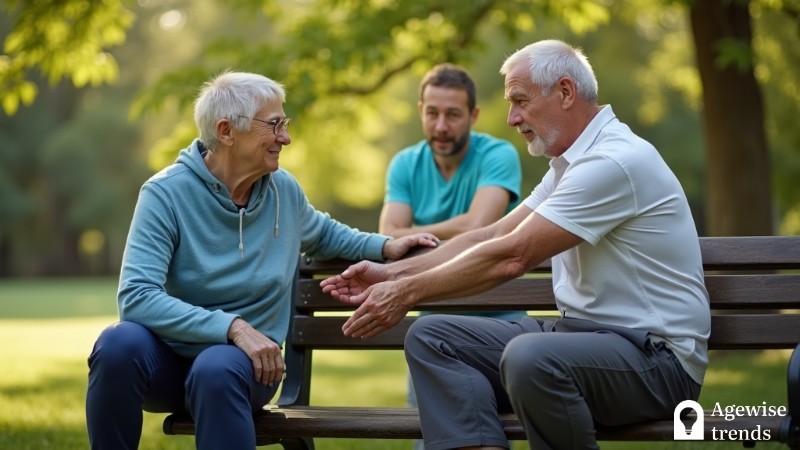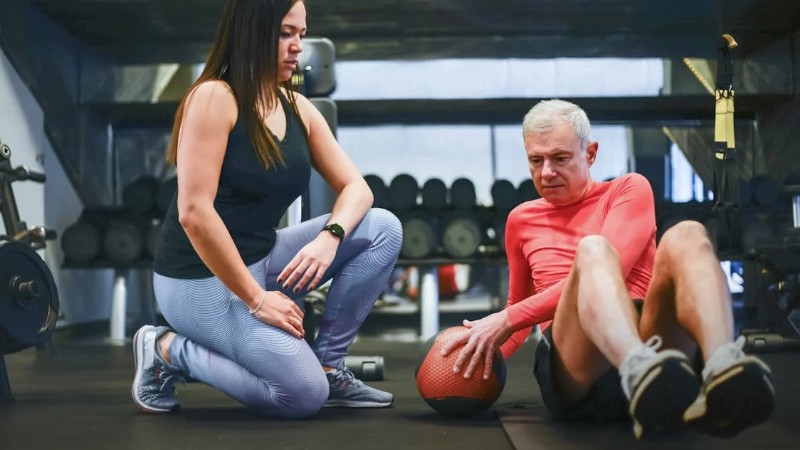Staying active in later years is one of the most effective ways to maintain independence, mobility, and overall well-being. Regular physical activity helps seniors improve cardiovascular health, strengthen muscles, and reduce the risk of falls.
However, how one approaches exercise can make all the difference. Warm-ups, often overlooked or improperly executed, play a crucial role in preparing the body for movement and preventing injuries. Yet, many older adults unknowingly make warm-up mistakes that could put their health and fitness progress at risk.
Key Takeaways
Proper warm-ups are crucial for older adults to prevent injuries and maintain fitness.
- Skipping warm-ups or performing them incorrectly increases the risk of strains and sprains in seniors.
- Dynamic stretching is more effective than static stretching before exercise, as it enhances flexibility and range of motion.
- Maintaining proper breathing techniques and staying hydrated during warm-up routines can improve overall exercise performance.
The overlooked importance of a proper warm-up
A good warm-up does more than simply get the body moving; it signals the muscles, joints, and cardiovascular system to prepare for increased activity. For seniors, this is particularly important due to the natural physiological changes that come with aging. Joint stiffness, decreased muscle elasticity, and slower recovery times mean that jumping into a workout without an appropriate warm-up can lead to strains, sprains, or even more serious injuries.
One of the most common errors older adults make is skipping the warm-up entirely. Many assume that since their workout isn’t high-intensity or overly strenuous, they don’t need to spend time preparing their bodies beforehand.
However, failing to warm up can lead to tight muscles, reduced mobility, and an increased risk of injury. Even a simple five- to ten-minute routine of gentle movements, such as arm circles, leg swings, or light walking, can make a significant difference. A well-executed warm-up increases blood flow, raises body temperature, and enhances the body’s ability to handle physical exertion safely.
Static stretching at the wrong time
Stretching is often associated with warm-ups, but when done incorrectly, it can do more harm than good. A mistake many seniors make is relying on static stretching—holding a stretch for an extended period—before their muscles are properly warmed up. While stretching is essential for maintaining flexibility, doing it before engaging in dynamic movement can lead to muscle stiffness and reduced circulation.
Instead, dynamic stretching—where movement-based exercises gradually increase flexibility and range of motion—is a more effective approach at the start of a workout. Movements like leg swings, arm circles, or light squats activate the muscles and prepare them for exercise. Static stretching, on the other hand, is best reserved for the end of a workout, when the muscles are warm and more pliable.
Poor breathing and hydration habits
Breathing and hydration might not seem directly related to warm-ups, but they play an integral role in how effectively the body prepares for physical activity. Many seniors unknowingly hold their breath while stretching or warming up, which can reduce oxygen supply to the muscles. Proper breathing techniques—such as inhaling deeply through the nose and exhaling through the mouth—support circulation, prevent dizziness, and improve overall exercise performance.
Hydration is another key factor that is often overlooked. As people age, the body’s natural thirst mechanism becomes less sensitive, making it easier to become dehydrated without realizing it. Dehydration affects muscle function, joint lubrication, and energy levels, increasing the risk of fatigue and cramping. Drinking water before, during, and after exercise helps maintain optimal performance and prevents discomfort during workouts.
Neglecting joint mobility and balance exercises
A warm-up should not only prepare the muscles but also prime the joints and improve stability. Seniors who focus solely on large muscle groups and neglect their joints and balance exercises may find themselves at a higher risk of falls or stiffness-related injuries. Joint mobility exercises, such as wrist and ankle rotations, and shoulder rolls, help lubricate the joints and improve flexibility.
Balance exercises should also be a key part of a senior’s warm-up routine. Standing on one foot, shifting weight from side to side, or practicing gentle heel-to-toe walking can strengthen stabilizing muscles and minimize the likelihood of falling. Warm-ups that incorporate these elements ensure that seniors maintain long-term mobility and independence.
Making simple adjustments to a warm-up routine can greatly improve both the safety and effectiveness of a senior’s workout. Prioritizing dynamic movements, maintaining proper breathing, staying hydrated, and including joint mobility exercises can better prepare the body for exercise. By adopting these habits, seniors can reduce injury risks, enhance flexibility, and continue leading an active and fulfilling lifestyle.














